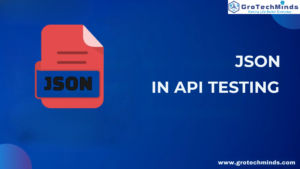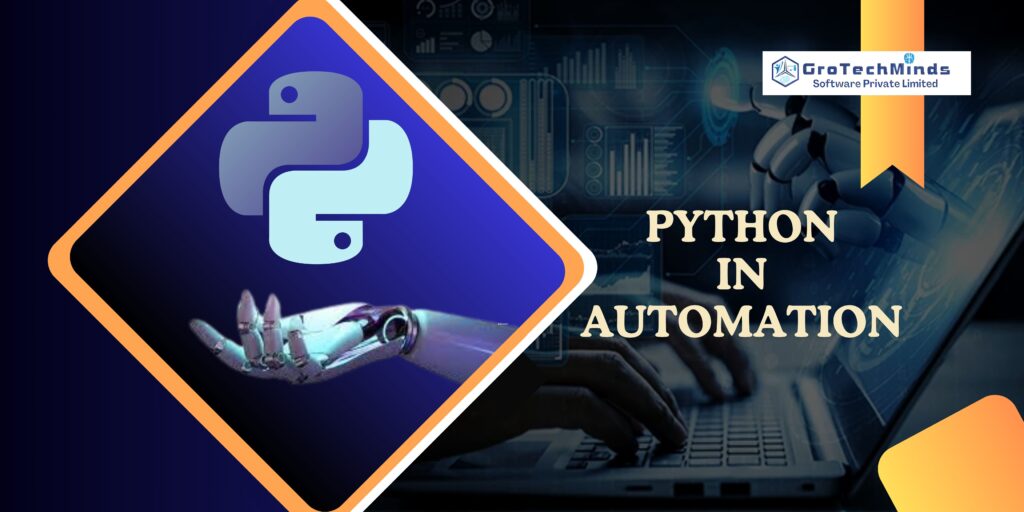

Python in automation testing
Python is a programming language that is quickly gaining popularity in the world of automation. With its easy-to-read syntax and vast array of libraries, Python has become an invaluable tool for businesses looking to streamline processes and enhance productivity.
- Python is a versatile programming language that can be used for automation in various industries.
- Python’s suitability for automating tasks and workflows is unmatched by other programming languages.
- Python libraries and frameworks such as Selenium, PyAutoGUI, and requests are commonly used for automation.
- Creating automated scripts using Python follows a structured process and can include input/output handling and error handling.
- Python can be used for web scraping, data cleansing and processing, machine learning and artificial intelligence automation, and testing automation.
Python is a versatile programming language, playing an essential role in automation. It is known for its simplicity, readability, and powerful libraries. With Python, it is easier to automate tasks seamlessly, thereby enhancing productivity in various industries, including healthcare, finance, and marketing. Python’s significance in automation cannot be overemphasised as it is uniquely suited for automating tasks and workflows due to its easy syntax and elegance.
Python’s role in automation is not limited to task automation but also extends to robotic process automation (RPA). RPA is the automation of repetitive or manual tasks, and Python is well-suited for this task. Python is used to automate scientific research, data analysis, image recognition, and natural language processing, among others.
Python automates tasks by breaking them down into smaller units of code, thus reducing complexity and increasing efficiency. Python libraries are pre-built code functions designed to carry out specific tasks, making automation easy and seamless. By utilising unique libraries such as Selenium, PyAutoGUI, and requests, Python automates tasks ranging from web crawling, data extraction, graphical user interface (GUI) automation, web application testing, and data visualisation.
Python’s flexibility has made it a widely used language for automation, and many libraries have emerged to aid in this endeavour. Let’s look at some of the most well-known libraries:
| Features | Applications |
| Automates web browser actions | Web scraping, testing, web automation |
Selenium is a web automation tool that can simulate user actions on websites, including clicking buttons, filling out forms, and navigating pages. With its rich collection of APIs, it can be used for testing, web scraping, and automating web interactions.
| Features | Applications |
| HTTP requests and responses | Web development, scraping, testing |
PyAutoGUI is a library that can simulate mouse and keyboard actions, making it useful for automating tedious GUI tasks or playing games that require repetitive clicks. It can also be used for desktop automation, such as running scripts on a schedule or controlling applications.
| Features | Applications |
| HTTP requests and responses | Web development, scraping, testing |
Requests is a library for sending HTTP requests and getting responses in Python. It is used extensively in web development, but it can also be used for web scraping and testing.
Other Python libraries for automation include BeautifulSoup for parsing HTML and XML documents, and Paramiko for automating SSH connections.
In today’s fast-paced business world, automation is essential to streamline processes and enhance productivity. One of the most effective ways to achieve this is by creating automated scripts using Python, a versatile programming language that is widely used for automation tasks.
The process of creating automated scripts in Python involves several key elements, including script structure, input/output handling, and error handling. By following these best practices, businesses can create reliable and efficient scripts that automate critical tasks and save time and resources.
When creating automated scripts with Python, it is essential to establish a clear script structure that includes all necessary inputs and steps. The script should begin with a header that identifies the purpose of the script, along with any required modules and libraries.
Next, the script should define the necessary variables and functions, including any input/output parameters. It is also important to include comments throughout the script to provide clarity and context for other users.
A critical aspect of creating automated scripts in Python is effective input/output handling. This involves defining all necessary input parameters and ensuring that the script can work with various types of input data.
Similarly, the output handling process should be well-defined, including any necessary formatting and data output options. This will ensure that the automated script generates accurate and relevant output that meets the business’s needs.
Error handling is a critical aspect of automated script creation in Python, as it helps to identify and address any errors that may arise during the script’s execution. By implementing effective error handling techniques, businesses can ensure that their automated scripts function smoothly and reliably, saving time and resources while enhancing productivity.
In conclusion, creating automated scripts with Python is a valuable tool for streamlining processes and enhancing productivity in various industries. By following best practices for script structure, input/output handling, and error handling, businesses can create reliable and efficient scripts that automate critical tasks and drive success.
Python is a popular language for web scraping, thanks to its efficiency and simplicity. Web scraping can automate the process of data extraction from websites, saving time and resources. With Python, web scraping can be used to extract data such as stock prices, news articles, and social media posts.
Web scraping involves parsing HTML code to extract data. Python libraries such as BeautifulSoup and Requests can simplify this process, making it easy to extract data from websites. These libraries can also handle issues such as proxy management and user agent identification.
However, it’s important to note that web scraping must be done ethically and legally. It’s essential to respect website terms of service and avoid scraping private or sensitive data. Some websites may also have measures in place to prevent scraping, so it’s important to test your web scraper and ensure it’s working as expected.
| Python Library | Key Features |
| BeautifulSoup | HTML and XML parsing |
| Requests | HTTP requests and responses |
| Selenium | Automated browser testing |
Selenium is another popular Python library that can be used for web scraping and automation. It allows you to automate web browser actions such as clicking buttons, filling out forms, and navigating between pages. Selenium can also be used for web testing and browser compatibility testing.
Overall, web scraping with Python can be a valuable tool for automating data extraction and streamlining workflows. It’s important to use web scraping ethically and legally, and ensure that your web scraper is working as expected.
Data cleansing and processing can be time-consuming tasks, but with Python, businesses can streamline these essential processes. By leveraging Python’s capabilities in data validation, data transformation, and data integration, companies can process large datasets efficiently, saving valuable time and resources.
Python is well-suited to data cleansing tasks, providing numerous built-in functions and libraries that can automate data cleaning operations. For example, Python’s pandas and numpy libraries offer powerful data manipulation operations that can help process raw data and prepare it for analysis.
Data transformation is another area where Python can be highly effective. Python’s beautifulsoup library simplifies the process of scraping data from web pages, while the regex library enables powerful text manipulation capabilities. These tools make it easy to extract and transform data, facilitating more in-depth analysis.
Finally, Python supports data integration, enabling businesses to combine data from multiple sources into a single dataset. With Python’s pandas library, companies can merge datasets based on common fields, combine data from different sources, and perform various types of data aggregation.
| Data Source | Data Manipulation | Data Integration |
| A spreadsheet containing customer data | Use Python’s pandas library to validate and clean the data, removing any duplicate or incomplete records | Merge the cleaned customer data with sales data stored in a database using pandas, to create a comprehensive view of customer and sales information |
| Raw data extracted from social media platforms | Utilise Python’s regex library to extract relevant data based on keywords, hashtags, or locations | Combine the social media data with customer and sales data using pandas, to identify patterns and correlations |
As demonstrated in the example, Python’s data cleansing, transformation, and integration capabilities can be applied to a range of use cases and industries. Leveraging these tools can help businesses to manage and analyse data more effectively, driving critical insights and business decisions.
Python’s integration with machine learning and artificial intelligence has revolutionised the automation game, enabling businesses to automate complex processes and boost productivity. With Python libraries such as TensorFlow, Keras, and Scikit-learn, developers can build customised machine learning models and seamlessly integrate them into their automation workflows.
From predictive analytics to natural language processing, Python’s compatibility with various machine learning and artificial intelligence tools allows for automation of complex tasks. For instance, businesses can leverage Python’s capabilities to automate customer service using chatbots powered by natural language processing, vastly improving customer experience and increasing efficiency.
Thanks to Python’s compatibility with machine learning and artificial intelligence, India’s tech-driven industry growth shows no signs of slowing down. As more businesses begin to adopt automation in their processes, Python’s prominence in the industry will only continue to grow.
In today’s fast-paced software development industry, testing automation has become a crucial aspect of the development lifecycle. Python’s versatility and ease of use make it an ideal language for testing automation, providing efficient and effective ways for developers to test their code.
Python offers a range of testing frameworks and tools such as Pytest, Nose, and Django testing framework, making it easier to write and execute unit, integration, and regression tests. These testing frameworks provide comprehensive reporting and debugging capabilities, thereby streamlining the entire testing process.
Python’s readability and flexibility allows for easy scripting of test cases, making it easier for developers to identify and rectify any errors in their code. In addition, the language’s ability to interact with other programming languages makes it an ideal candidate for automation testing of cross-functional applications.
The use of Python in testing automation has several benefits, including increased productivity, faster testing cycles, and enhanced test coverage. By leveraging Python for automation testing, developers can identify and resolve errors quickly, reducing the time required for manual testing and improving the overall quality of the code.
Python has emerged as a key player in automation, with various industries adopting the language to streamline their workflows and increase productivity. Looking ahead, there are several future trends and opportunities that may impact Python automation.
RPA is already transforming the way businesses operate by automating repetitive tasks and enabling human workers to focus on more strategic activities. Python can be integrated with RPA tools such as UiPath and Automation Anywhere to achieve this automation.
The IoT presents a vast potential for Python automation. By using Python libraries like MQTT and paho-mqtt, developers can facilitate communication between connected devices and manage IoT networks. Python’s versatility and ease of use make it well-suited for IoT-based automation.
The integration of AI and machine learning with automation is expected to lead to intelligent automation. Python’s popularity in the field of AI and machine learning makes it a natural choice for intelligent automation. This is likely to transform industries such as finance, healthcare, and retail.
As the demand for automation increases, so do the opportunities for Python developers. There are many careers in automation, including automation engineers, RPA developers, and machine learning engineers.
Overall, Python automation is set to continue to thrive as new advancements are made, and businesses seek to enhance their productivity and competitiveness.
Python is a powerful tool for automation testing, offering a wide range of libraries and a straightforward syntax that can help streamline and optimise your testing processes. By leveraging the capabilities of Python, testers can significantly speed up their test execution and achieve greater efficiency in their automation efforts. As the popularity of Python continues to grow in the testing community, it is clear that its versatility and ease of use make it a valuable asset for any testing team looking to improve their automation processes. If you haven’t already explored the potential of Python in automation testing, now is the perfect time to do so and take advantage of its benefits.
Automation testing with Python using the Selenium WebDriver framework offers a powerful and efficient way to ensure the quality and reliability of software applications. Whether you are a beginner or an experienced professional, mastering this tool can greatly enhance your testing capabilities and boost your career prospects. In GroTechMinds With the guidance of industry experts and real-time learning, you can gain the knowledge and skills needed to excel in automation testing with Python. So, take the steps to pursue certification and elevate your expertise in automation testing with Python today.
Consult Us


















